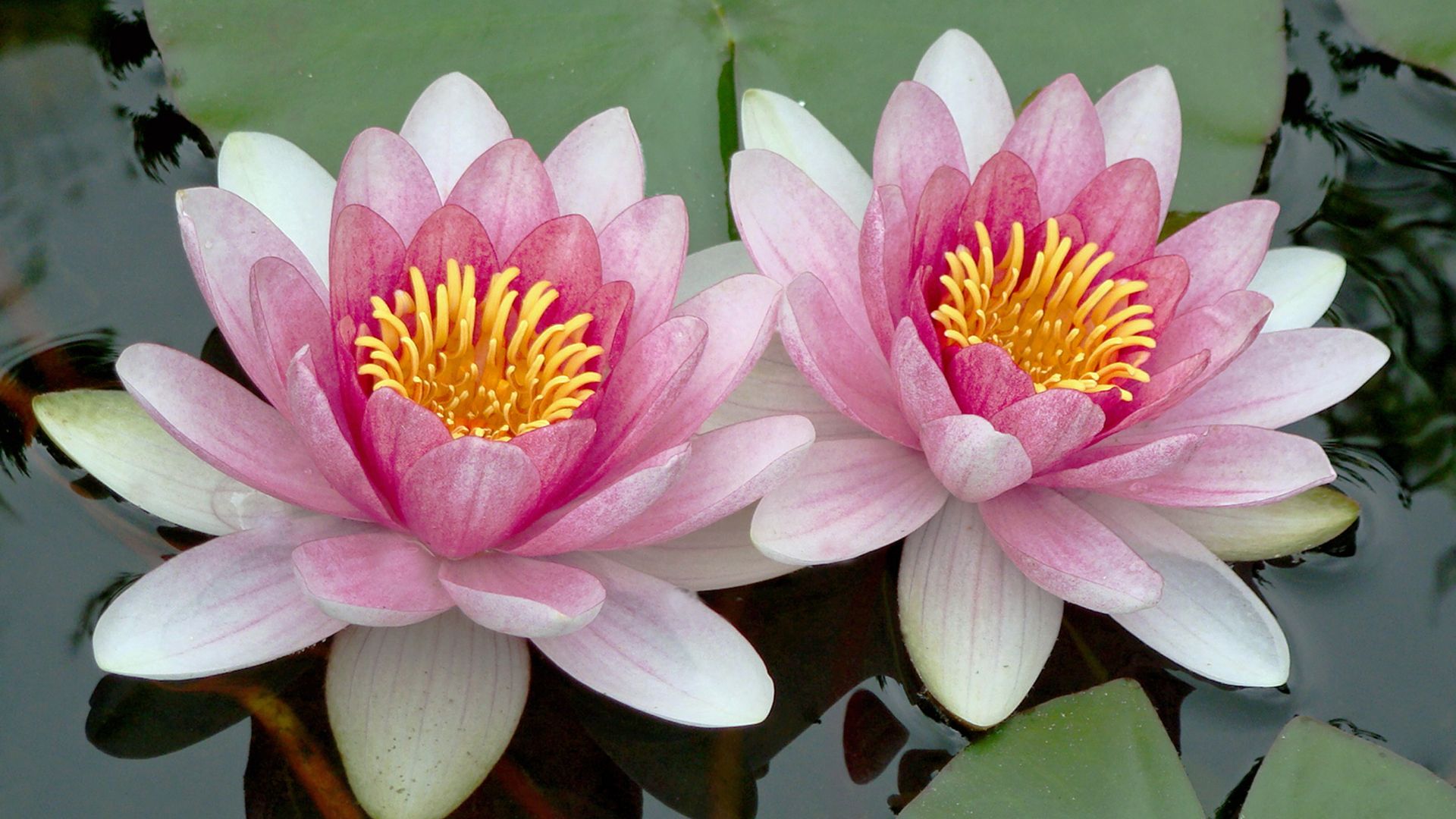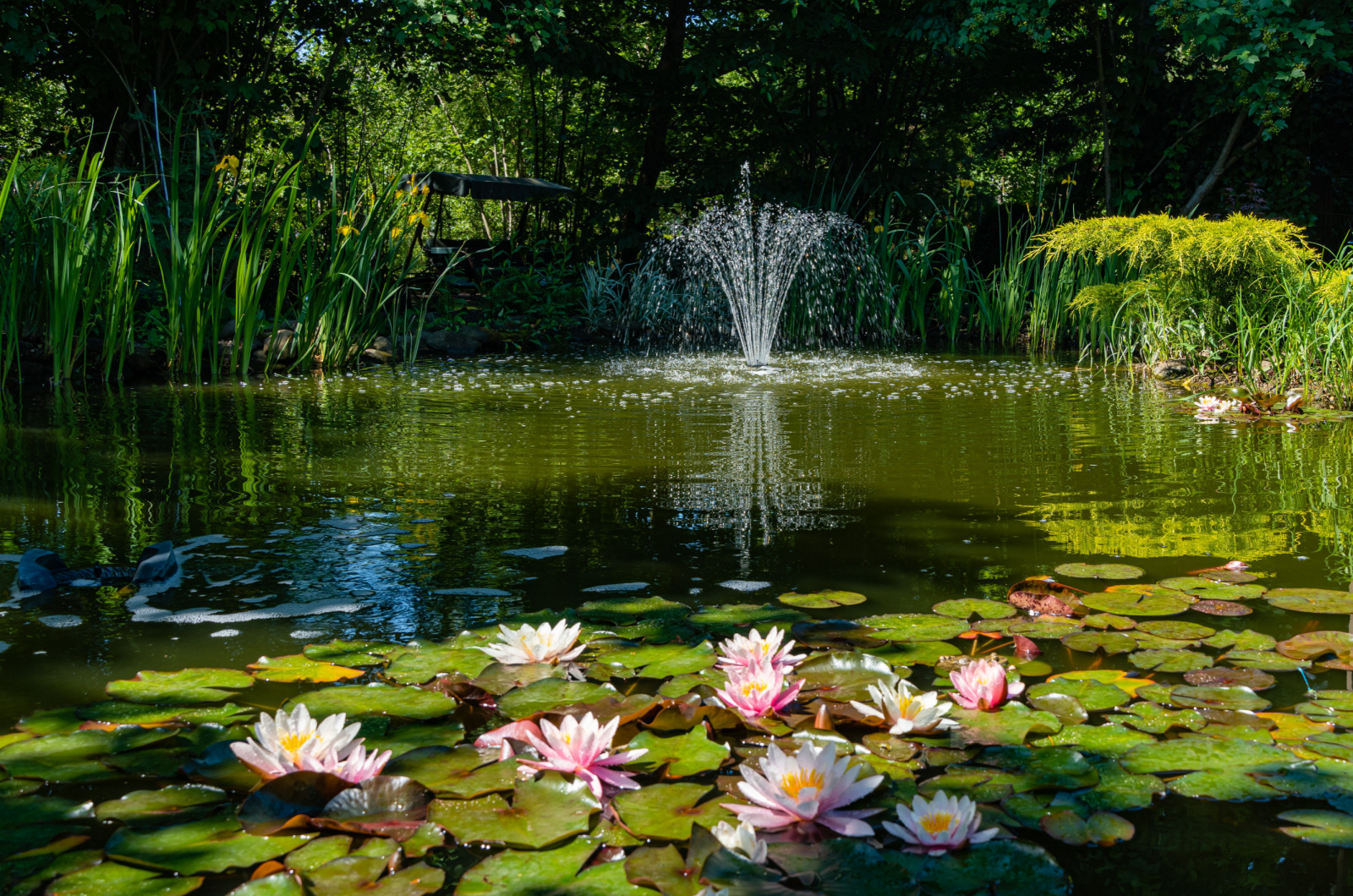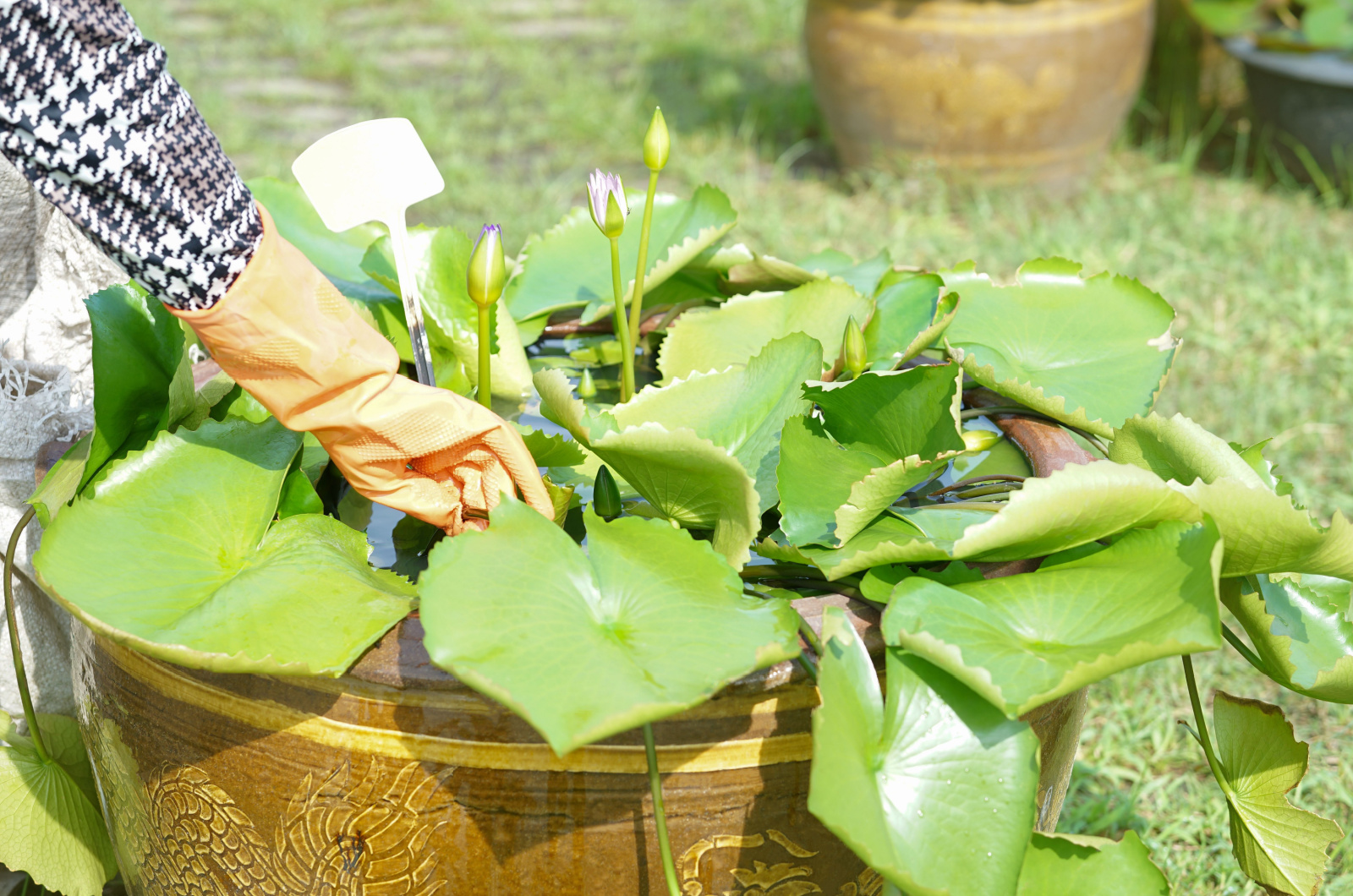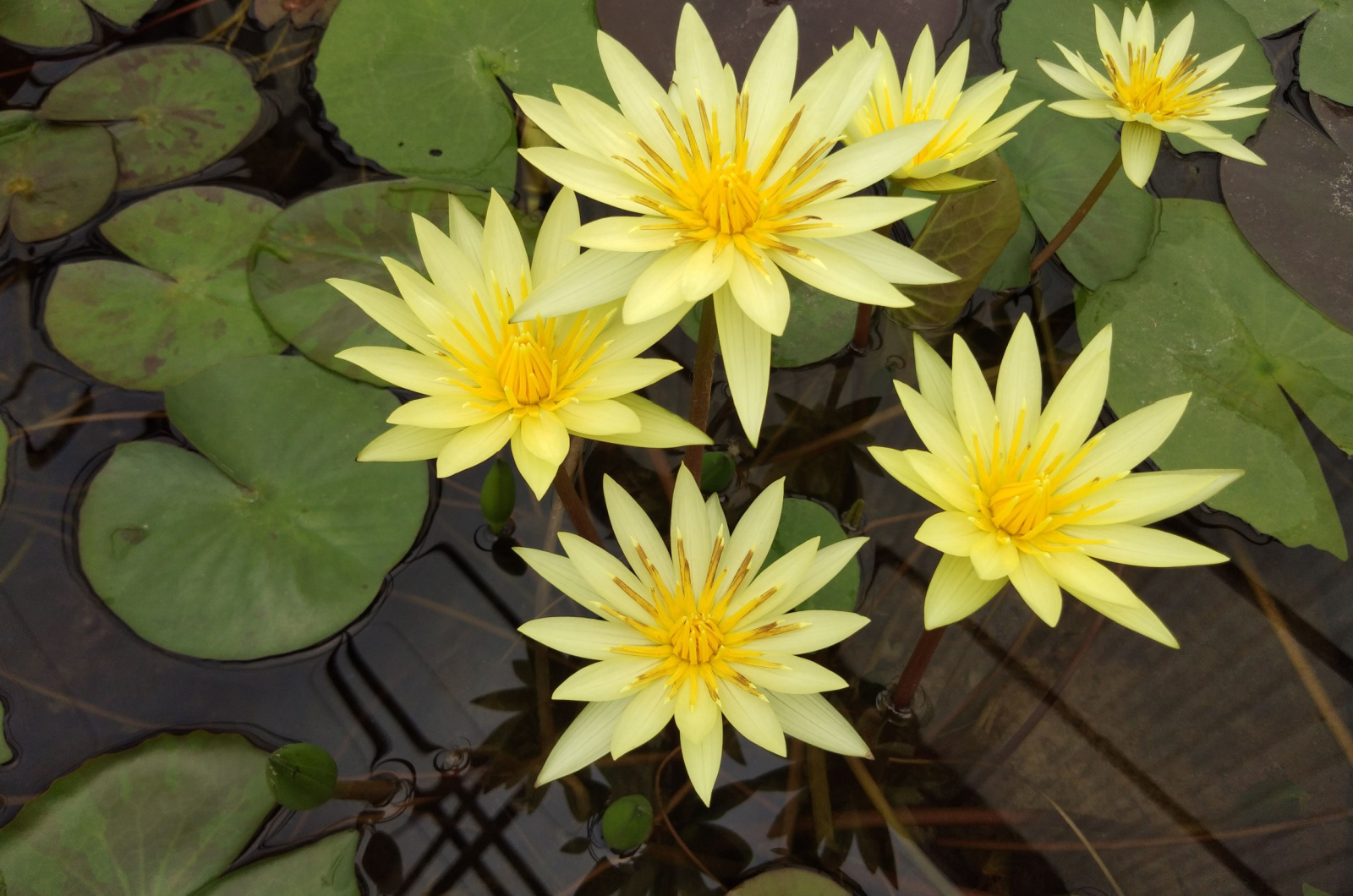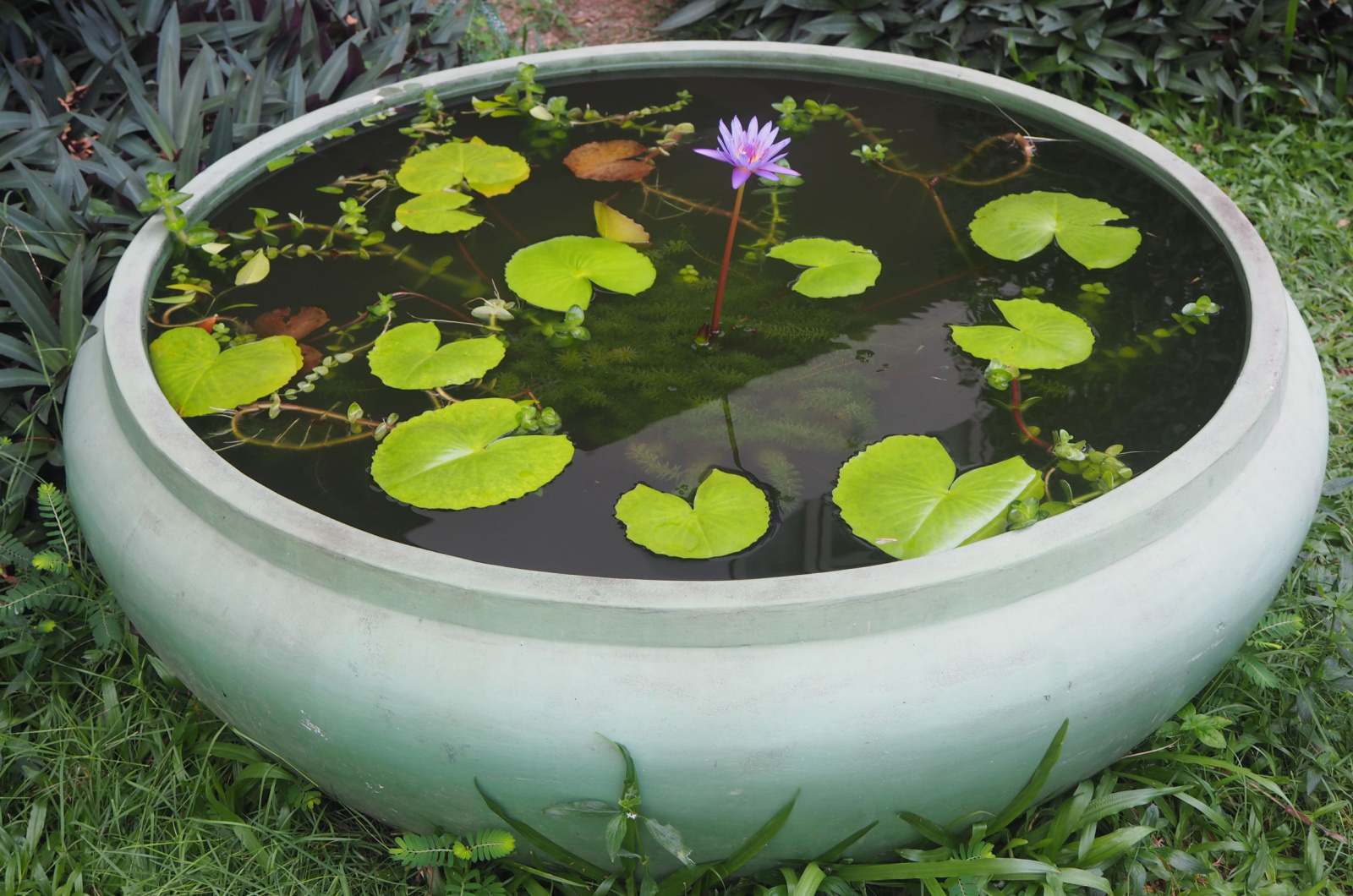All flowers look beautiful but if I had to choose only one, the lotus flower would definitely be my pick.
These perennial aquatic plants are often found in backyard ponds and the reason is their large leaves and stunning blossoms.
If you’re enchanted with this plant and want to add it to your garden but aren’t sure about its requirements, this article has all you need to know.
I’ll show you how to grow lotus flowers, which varieties to select, and how to get more of these plants for free!
Let’s get started!
More About Lotuses
First and foremost, you should know that lotuses and water lilies are not the same plant. Lotuses belong to the Nelumbo genus, which is a part of the Nelumbonaceae family.
On the other hand, water lilies come from the Nymphaea genus from the Nymphaeceae family.
Well, botanical differences don’t mean much when you’re looking at these plants but you can easily differentiate between the two by observing the blossoms and foliage.
Lotuses are emergent aquatic plants, which basically means their blossoms and foliage rise above the water line and can reach up to 6 feet!
On the contrary, water lily blossoms float and can rise up to 8 inches above the water line.
Lotuses are found in North America, Asia, and South America, depending on the variety.
The blossoms can come in white, pink, or yellow and the plants are hardy in USDA zones 4a through 10b.
Lotus Care Guide
Now that you know the features of lotus plants, it’s time to learn what it takes to make them thrive.
Light
The essential condition you need to ensure for your lotus flower is full sun. These plants can’t survive if they don’t receive at least 6 hours of sunlight daily.
Lack of light will lead to poor growth and discoloration in flowers and foliage, which is the last thing we want.
Soil And Water
If you want your lotus to reach its full potential, you have to ensure the perfect soil. It should be a nutrient-rich and clay soil.
These are moisture-loving plants, which means the soil must retain enough water for healthy development. You can achieve this texture by mixing pine bark and topsoil.
Growing lotuses without soil is also possible but it’s way easier if you use it.
Keeping the soil consistently moist is the key to healthy lotus growth but you need to make sure that new shoots don’t sit in water when they emerge in spring. Remember, there’s a great difference between wet and waterlogged soil!
Temperature And Humidity
There are a lot of lotus cultivars and hardiness may differ from species to species. However, most of them enjoy cooler temperatures.
You need to make sure the soil is wet and never allow the water to freeze!
These plants have moderate humidity needs and are pretty adaptable when it comes to this condition. Of course, extremely low or high humidity may damage your lotus, so it’s essential to keep an eye on overall growth.
Fertilizer
Lotus plants that grow in ponds or lakes receive natural material, which means supplemental feeding isn’t required.
On the other hand, if you decide to grow these plants in pots, you should boost the nutrient levels in the soil.
I recommend feeding your lotus with water-soluble 20-10-20 fertilizer approximately every 20 days.
Pruning
These aquatic plants typically need pruning in late fall or winter, i.e., when the blooming season ends and your lotus enters dormancy.
However, you should remove any dead or discolored foliage and stems regularly to promote healthier growth.
Lotus Varieties
Lotus varieties and cultivars make excellent water plants for ponds or pots. The two main types are the American lotus, scientifically known as Nelumbo lutea, and the Sacred or Asian lotus aka Nelumbo nucifera.
The first type features white or yellow blossoms that can be up to 10 inches in diameter. It can be found from Canada to Florida.
The Sacred or Asian lotus is renowned for its massive white and pink blossoms. Interestingly, all its plant parts are edible and have high nutritional value. (1)
Additionally, the Sacred lotus has religious significance; it’s one of the most important Chinese flowers and conveys a fundamental aspect of Buddhism.
There are numerous hybrids and cultivars of lotus plants and the blossoms may come in various shades of yellow and pink; some even have double petals!
Here are some examples:
• Green Jade of Qinhuai: This is a tiny cultivar perfect for smaller containers. It features double-petaled blossoms that combine perfectly with green centers.
• Missouri: If you want a really resilient cultivar, Missouri is the best option.
• Sunburst: This cultivar has a pretty fast growth rate and is larger compared to its cousins.
• Mrs. Perry D. Slocum: This cultivar has an interesting name and features double blossoms that emerge as pink, then transform to yellow, and finally turn into cream once they are fully mature.
• Ancient Capitol Red Palace: Dark red flowers appear on 48-inch tall stalks.
• Chongban Bayi Lian: This is a small variety that generates lovely double-petaled blossoms with pink edges and a yellow central part.
• Pink Beauty: Everything is in the name; the captivating bright pink blooms have deep pink centers.
How To Propagate Lotuses
Remember at the beginning when I mentioned that you can get free lotus plants? The easiest way to do this is to propagate your lotus via division.
Growing this aquatic plant from seeds is possible but it requires some skill and the success rate isn’t really high.
You should start dividing lotus rhizomes in early spring; do it while the plant is still sleeping or when new foliage starts to emerge.
Here are the steps:
1. Take your lotus out of its pot but make sure to do it carefully to avoid breaking the plant.
2. Inspect the root ball and divide it into portions; each portion should have at least one rhizome. You can either plant separate portions into a pond or put them in a container.
3. If you decide to grow them in a man-made water source, simply add a layer of wet soil to the pot (without drainage holes).
4. Put the lotus rhizome in the pot, making sure the growing tip points upwards.
5. Keep adding soil over the rhizomes until they’re halfway covered.
6. Add a layer of gravel.
7. Add water to the pot and put it into the water source.
8. The container should be as close to the surface of the water as possible to promote faster development.
9. Find a sunny spot for the container.
10. Taller varieties may need a support cage that will protect them from tipping over.
How To Overwinter Your Lotuses
There’s one essential thing to understand about lotus plants. They’re hardy to lower temperatures but the water source they grow in should never freeze solid.
The easiest way to prevent this is to install circulation pumps in the growing medium, i.e., water containers or ponds.
If possible, put the lotus containers in deeper water that won’t freeze. Alternatively, remove the containers from the water and keep them in a cool spot, making sure the soil is consistently moist.
Common Problems
The biggest problem your lotus may encounter is a lack of blooms. Even though these plants can withstand low temperatures, they must receive a lot of direct sunlight.
Since these are aquatic plants, you should never leave them without water or allow the water source to freeze solid.
Finally, issues with growth and blooming may occur if your lotus becomes rootbound or overcrowded; rhizome division is the only solution.
Growing lotus plants isn’t rocket science like many believe. Simply follow our guidelines and meet its basic requirements; your lotus will appreciate it and reward you with its captivating incomparable blossoms!
References
1. Ld, L. S. M. R. (2023, July 12). 5 unique health benefits of Lotus. Healthline

